Feb 22-23, 2025
Small Unit CQB
Orion Training Group
Ben Franklin Range (Templeton, PA)
2 days (18 hours)
BLUF (Bottom Line Up Front)
Orion Training Group (OTG) has made a well-respected name in CQB (Close Quarters Battle) courses, and it is easy to see why. I wholeheartedly recommend this class to any student ready to move beyond “basic” gun handling and flat range skills and is willing to learn how to employ firearms to achieve an objective with a small team of similarly trained people.
I will be making it a priority to take more OTG classes, as their instruction is top-notch, and the types of classes they offer in Small Unit Tactics (SUT) and CQB are topics I wish to become more proficient in.
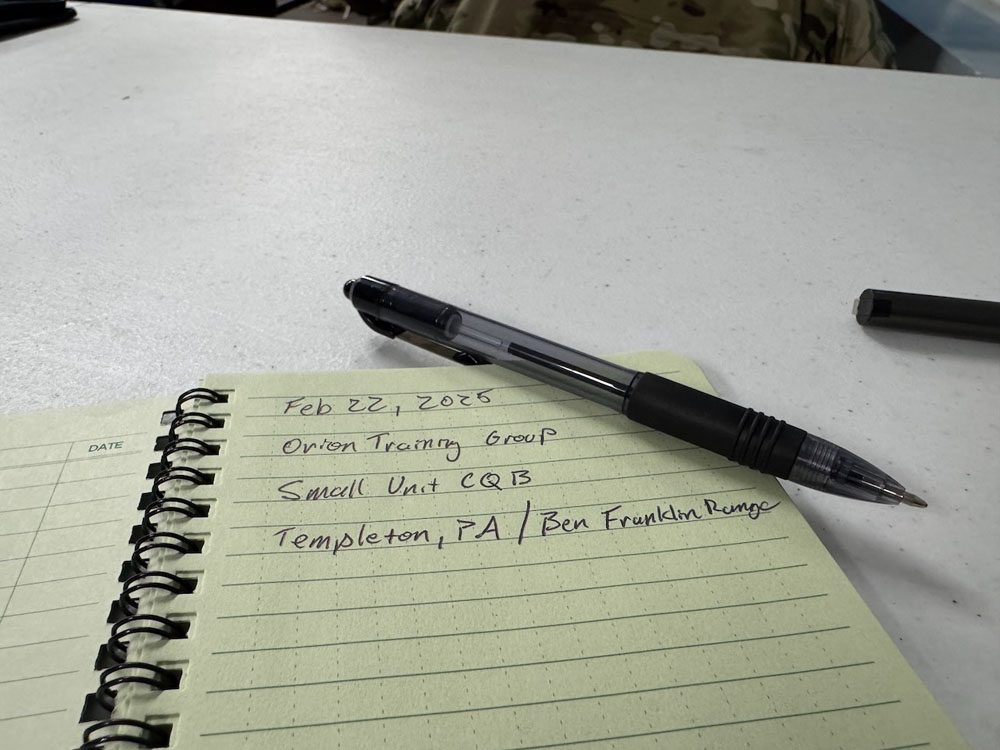
Expectations
Every class you ever take is going to have some “unknowns.” Those can range from the curriculum to the facility, the personalities of instructors and staff, your performance with the subject matter, and any combination of hundreds of other factors. So it’s a complete luxury and an incredible resource to have close friends who train regularly and give you the lowdown on a class they have attended. I was lucky enough to have just that for the Orion Training Group (OTG) Small Unit CQB class held at the Ben Franklin Range in Templeton, PA, this February.
Several years ago, I was working my then 9-5 job in advertising and had to “be fair” to my employer and spread out my PTO. This action was to ensure I wasn’t “unfairly taking advantage” of my company and burdening them with covering the time off I earned in short succession. So when I had the opportunity to take an Orion Training Group CQB class a few weeks after I had just taken Shoothouse Level 1 with Greenline Tactical, I balked and decided to play the good “Company man” and not take the class. (Greenline Tactical runs a fantastic class btw. Everyone should train with them if they have the chance)
Side note: The corporate world is bullshit. Take the time you earn, and never let yourself miss an opportunity to do something amazing for the sake of an employer who won’t hesitate to lay you off tomorrow if the revenue numbers make sense. Ask me how I know…
Luckily, three close friends who had spent hundreds of hours training with me took the course. Along with some great anecdotes and a general sense of the cadre’s personalities, the overall takeaway was that OTG left an incredibly positive impression on them. Their methodology and the techniques they taught would become the de facto baseline for how we would employ and practice Close-Quarters Battle (CQB) techniques within our training circle.
This insight from trusted sources and that OTG has put out an extensive library of free CQB content on YouTube set a high bar in my mind for what I would experience in one of their classes. For the Small Unit CQB course, I expected:
- To see robust and varied expertise from multiple instructors who have made professions of clearing structures
- To learn contemporary CQB skills that will allow me to solve room-clearing problems smoothly and efficiently in real-time and support my teammates using a principle-based methodology.
Now, having finally had the opportunity to take one of their classes, my expectations were solidly crushed. I was initially worried about taking the course because I knew my expectations were so high, and I was afraid that I would not be able to give a fair or objective evaluation.
I put this course in what I call the “Peter Luger” category of classes. For those unfamiliar, Peter Luger is a steakhouse in Brooklyn, NY, that has earned an incredibly vocal and passionate following for its steaks. People rant and rave about how good it is, and for the uninitiated, it seems like it all has to be “hype.” But it’s not. It lives up to every ounce of its reputation. That is where OTG now lives in my brain.
As for expectations of my performance as a student, there was a bar I wanted to meet. I would never consider myself an expert in CQB. Still, I have attended multiple classes as a student and assisted in many courses as an AI (Assistant Instructor) for the F.I.S.H. (Fighting in Someone’s House) series of classes offered by Tremis Dynamics. With these experiences in mind, My expectations were:
- I should not get bogged down on some basics, like eliminating time gaps when entering rooms and working my designated corner or sector as I enter a space. This would afford me more mental bandwidth to solve problems and assess my teammates’ intentions.
- I would dedicate the weekend to being in “student mode.” Before the weekend, I decided to absorb as much information as possible, focus on my performance, and be as good a teammate as possible by listening and adapting to feedback.
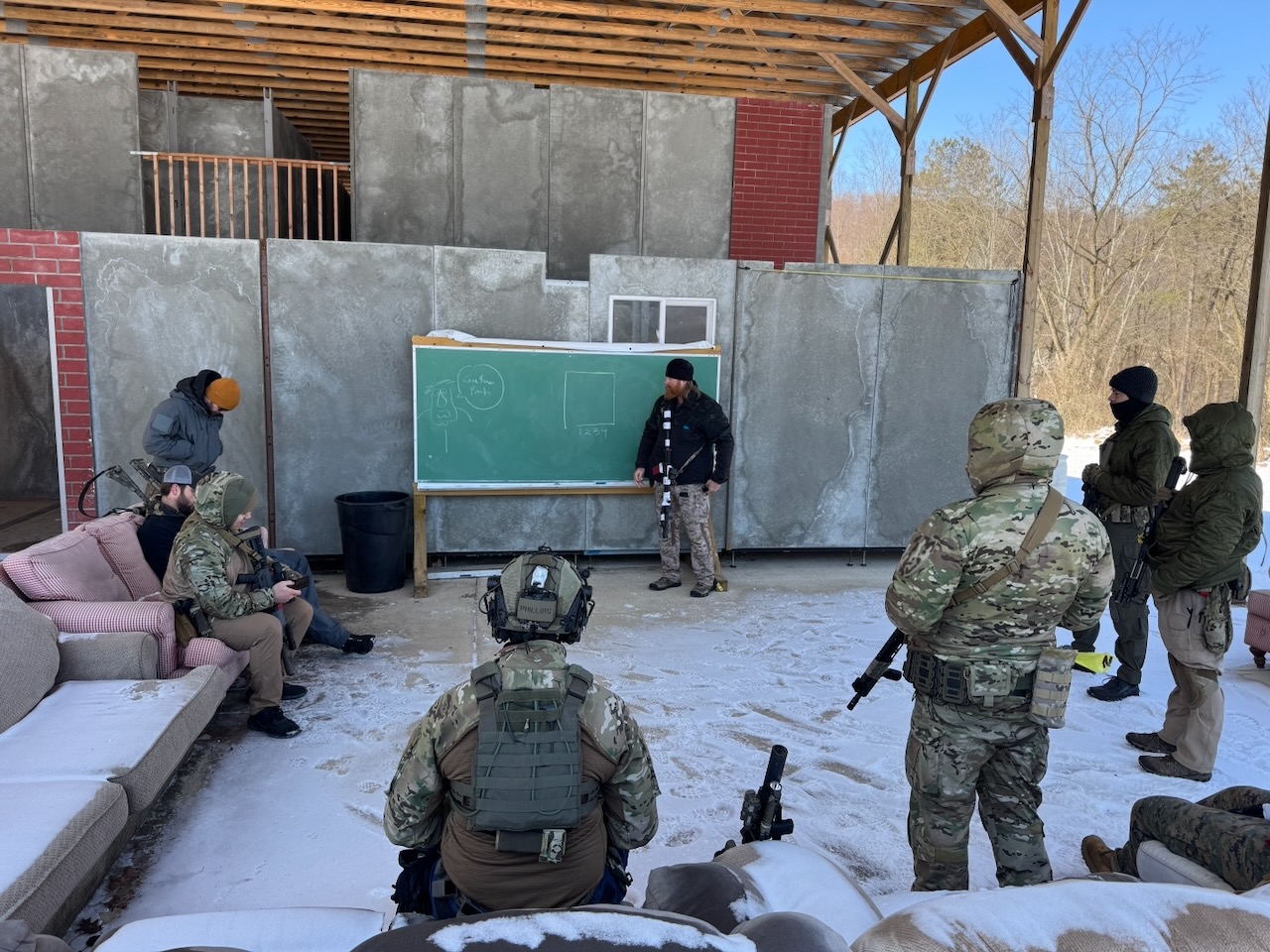
Course Overview
Without delving too deeply into the concepts discussed in the class (again, you should check out the OTG YouTube channel for details), I’ll share how they presented those ideas and why I think the class was so successful.
First and foremost, this was a non-live-fire class, so it bears mentioning that safety was paramount in this course. While real firearms were used as learning tools, demonstrations and drills were conducted after a thorough safety check, ensuring that all firearms were non-functional and no ammunition was present. The emphasis on safe gun handling also bolstered this environment through the four firearm safety rules and a pre-determined medical plan in case of any injury.
OTG divided the weekend into many small blocks of instruction that succinctly delivered a digestible amount of information, such as panning thresholds or opening a pull door as a team. Then, we would immediately run that concept in a drill multiple times, rotating so each student could play different roles within “the stack.” In each block, we’d rotate to various areas of the shoothouse, allowing us to practice that same skill under the eye of one of the other instructors.
The pacing and flow of the class was fantastic, as it kept us all super-engaged and active in conditions (mid 20°s F) that were not ideal. It’s easy to get disengaged when the temperatures are too extreme, the weather takes a shit, or the class slows down due to students hitting “the wall” of “information saturation,” but the cadre kept spirits high and all of us moving. I think this was critical for us to keep digesting and retaining knowledge.
Now, the facility itself can also be a massive factor in the success of a class. In this case, OTG has found the perfect partnership in holding classes at the Ben Frankin Range (BFR). Their shoothouse on the property is one of the most impressive training tools I have ever seen. It puts any other non-ballistic shoothouse I’ve seen to shame, and the variety of interior rooms allows for an incredibly diverse and thorough learning environment. Most impressively, however, is that the shoothouse is just one of the key features of BFR, which has extensive flat ranges and a ton of variety in long-range shooting. In addition to that, it also offers a clean, comfortable, convenient, and reasonably priced bunkhouse for students. If you ever get to take a class or attend any of the interesting charity and competition events held at BFR, you 100% should.
Considering all this, OTG’s work at BFR is exceptional. They have good people teaching fantastic material at an excellent facility, and… it’s attracting dedicated and engaged students.
The difference between a good and a great training school is whether it makes a real effort to develop its alums and support the greater training community. Everything I have seen and heard from OTG is strong on both sides.
If you’re interested in finding a sense of community for yourself, look into the Promethean Program that OTG has developed. Students can apply to a subscription-based membership program that offers a host of exclusive peer-to-peer development classes. In these classes, you get more time with the cadre and fellow students to dive deep and hone skills learned in the open enrollment classes.
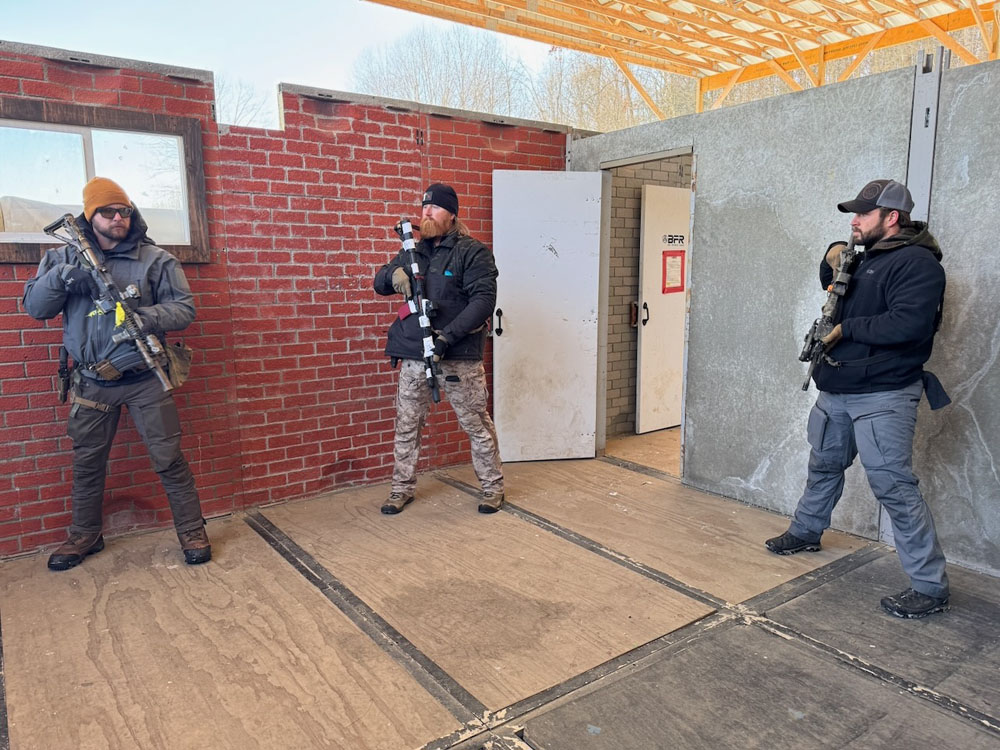
Instructors
In my opinion, the secret to a successful training program is not the curriculum. Now, I’m sure many people would argue with that. I’ve even seen some trainers in this industry make accusations of intellectual thievery in the attempt to “own” a particular drill, concept, or even a whole genre of classes. They try to be or stay relevant because they teach something someone else doesn’t. But trying to pin the success of any educational endeavor on anything other than the quality of the instructor and the willingness of a student to learn is generally bullshit.
In a class like this, the real engine of success is a teacher’s ability to connect with a group of students and effectively communicate ANY subject. The best teachers strike a balance between entertaining and engaging, and it doesn’t matter if that particular piece of information is taught by anyone else… because they teach it better.
To me, there is no secret to OTG’s success. It’s because of the quality and abilities of its instructors and the careful crafting of the cadre by the company’s leaders.
The Small Unit CQB course was instructed by:
- Blake: The stoic leader who expertly struck the difficult balance of keeping everything on track while still knowing how and when to inject some much-appreciated levity. He was critical in setting the overall professional and positive tone for the class.
- Alex: The more reserved one of the group, who exuded an overwhelming sense of care and appreciation for the students and was excellent at observing the groups and giving pointed and effective feedback, and
- JD: One of the most attentive, animated, and dynamic instructors I’ve had the pleasure to learn from. He had an incredible ability to shift up and down from energetic to “chill” to help drive points home or set the tempo of the exercise.
All three brought decades of legit professional and/or combat experience from several military branches. In retrospect, I think this is one of the reasons I’ve developed such respect for how OTG builds out its training staff… as it doesn’t rely on just one branch or specific special operations group to feed its ranks. The instructors openly talk about how different groups, branches, and professions do things differently, but through that multicultural approach, they work together to practice and teach universal principles. I thought that was impressive as hell.
I’m super appreciative of the opportunity to spend a lot of time with all of them over the weekend. Each had a different style and focus, making for a well-balanced class that allowed us to receive lots of feedback and show significant improvements over a very short time.
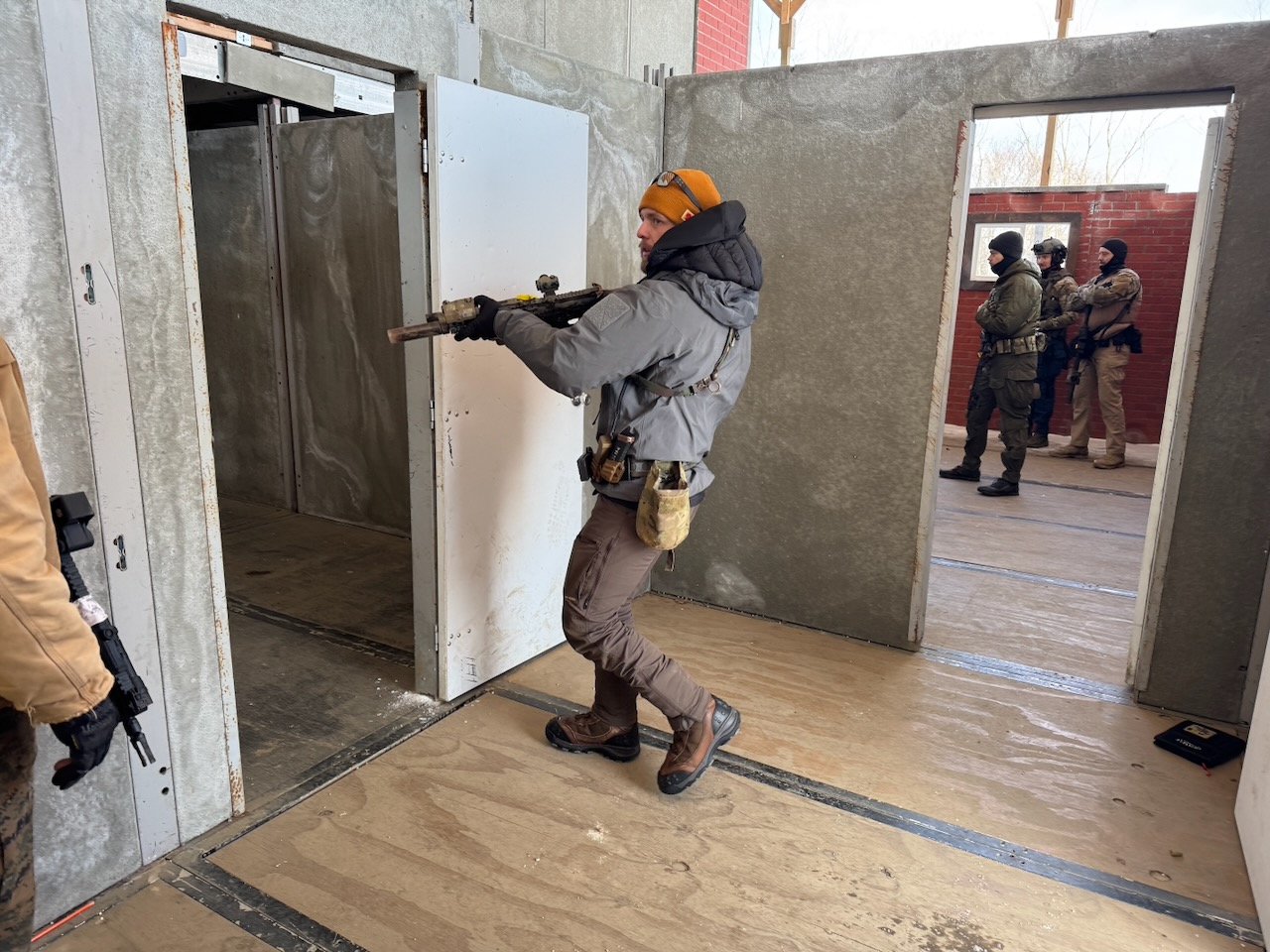
Topics Covered
- Principles of CQB (Safety, Security, Speed, Surprise, Violence of action)
- Threshold Assessments (Panning, Center Checking, or Pushing into the room)
- Non-verbal communication (“The chop,” “Opening the gate,” body language, squeezing in the stack)
- Entering rooms (Center-fed, Corner-fed, 2-4 man entry)
- “Running the Rabbit” vs. “Pushing the Fight”
- Team control and communications
- Dead spaces
- Opposing threats (Using the “Meistro” technique to trade jobs)
- Body blocking for teammates
- Closed Doors
- Adjoining Rooms
- Hallways
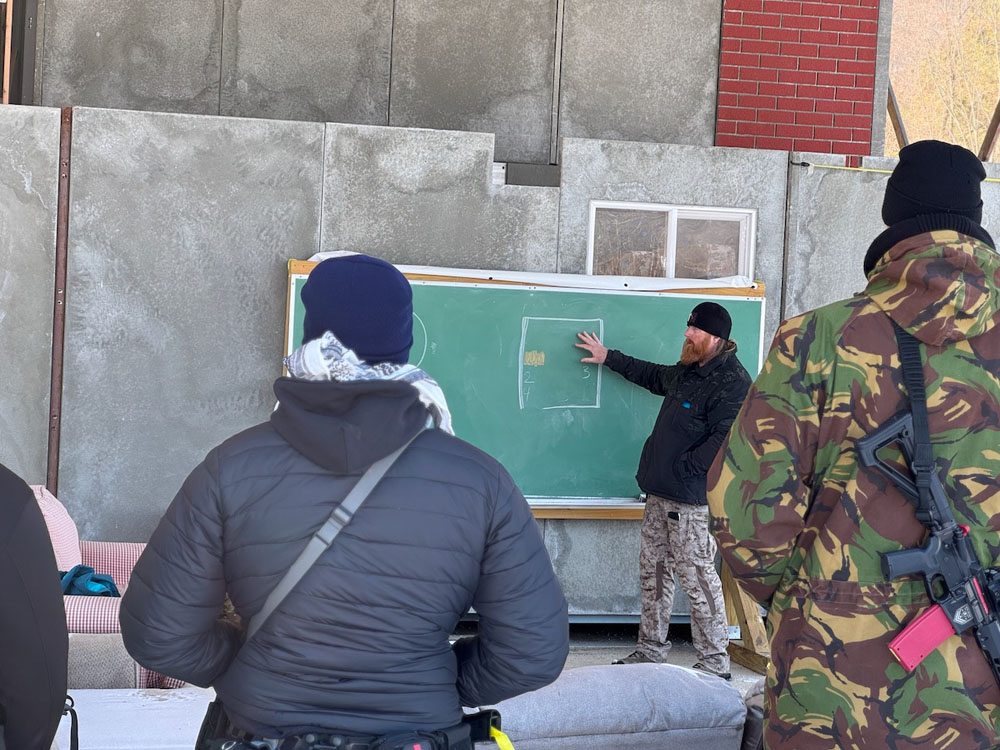
Key Takeaways
A great class will often leave your head swimming with a million new things, but I’ve found picking out the outstanding few that rise to the top helpful.
Professionalism is key: There were a few times in this class where it was emphasized that “Professionals do it this way” with a quick demo. These quick tidbits were incredibly helpful in helping me understand some of the concepts. Body language is the one that stuck in my head the most, and reading a teammate’s intentions by their posture and actions. However, one of the most helpful moments was seeing JD show us a “full-speed” demo of how SEALs would clear a room. It was quick, and it was smooth, but it wasn’t blazingly fast. I think seeing this helped us in the class understand the concept of only moving as fast as our brains could process the room.
Develop your team: As the drills progressed and we were presented with more challenging problems to solve within the room, such as multiple dead spaces and additional doorways, it became abundantly clear that knowing your teammate’s movements is critical in this line of work. Seamlessly transitioning between pre-determined jobs, entering a room, and improvised problem-solving employing nothing but nonverbal communication is key. The only way to get good at this is to practice regularly with a dedicated team working on the same sheet of music.
Sweat the small stuff: The devil is in the details, as they say. Whether figuring out where to place your feet as you enter a doorway for a “button hook” or keeping your rifle straight up or down at a 90º angle to “open the gate,” the details absolutely matter. Are they critical for getting the job done? No. But working on those things is a mark of progression and proficiency in the discipline of CQB. In my journey of learning this topic, ignoring the details would be a disservice to myself and any future teammates.
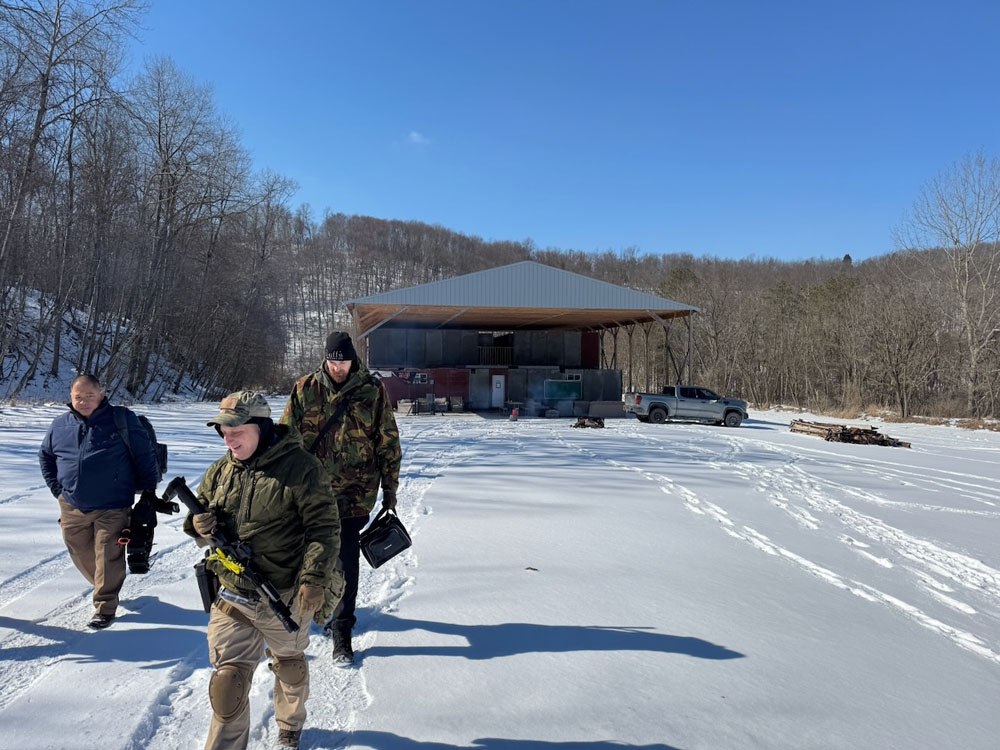
Course Feedback
At the end of the class, Blake asked for live feedback from the students on what they thought of the course. He asked for candid feedback and took notes. Personally, I love to see that from training companies, and it has always struck me as a sign of dedication to the craft of teaching.
Sustain
- Cadre: The quality of instruction was excellent, a key success factor in absorbing such a robust amount of information in such a short amount of time.
- Pacing: The class delivered much information but did it efficiently and with minimal downtime.
Improve
- Ditch the Force-on-Paper Block: There was an awkward transition at the end of day two. I suggest forgo renting out UTM/Simunition bolts so that more time can be dedicated to instruction on addressing hallways or to allow the class to end earlier on a Sunday evening.
- Handouts: OTG provides an incredible and robust amount of information on YouTube, but that information is not easily referenceable during a class. A minimal handout offering basic diagrams or a glossary of terms would be awesome.
Self Feedback
I noticed several things about my performance during the class. These may not apply to you or where you are in your journey, but reading them may help you understand what to look out for in your path of learning CQB.
Sustain
- Looking for work: I felt like I was doing well at picking up whatever job wasn’t being done at a given time, whether rear security or jumping in to clear a dead space if another team member was occupied or delayed.
- Threshold assessment: My use of vertical thresholds (panning and center checking) was good. I focused on adequately using the edge of the threshold for cover/concealment and only moving as fast as I could process.
Improve
- Footwork: Several times during the class, my feet would get tangled with another student or trip on a door frame. I need to minimize any negative impacts on my team and maximize speed/efficiency when entering a door.
- Threat assessment: I pressed a trigger on two targets without a weapon. I have not been practicing enough with targets that require me to look at their hands, which shows.
- Closed Doors: I need more time working on seeing, addressing, and opening closed doors. In several rooms, I did not notice a closed door in an unexpected location until much later than I should have.
- Ready position: When I enter a room, I default to a very “low” ready/scanning position to more effectively address a low or crouched bad guy, which slows down my ability to respond to a standing threat.
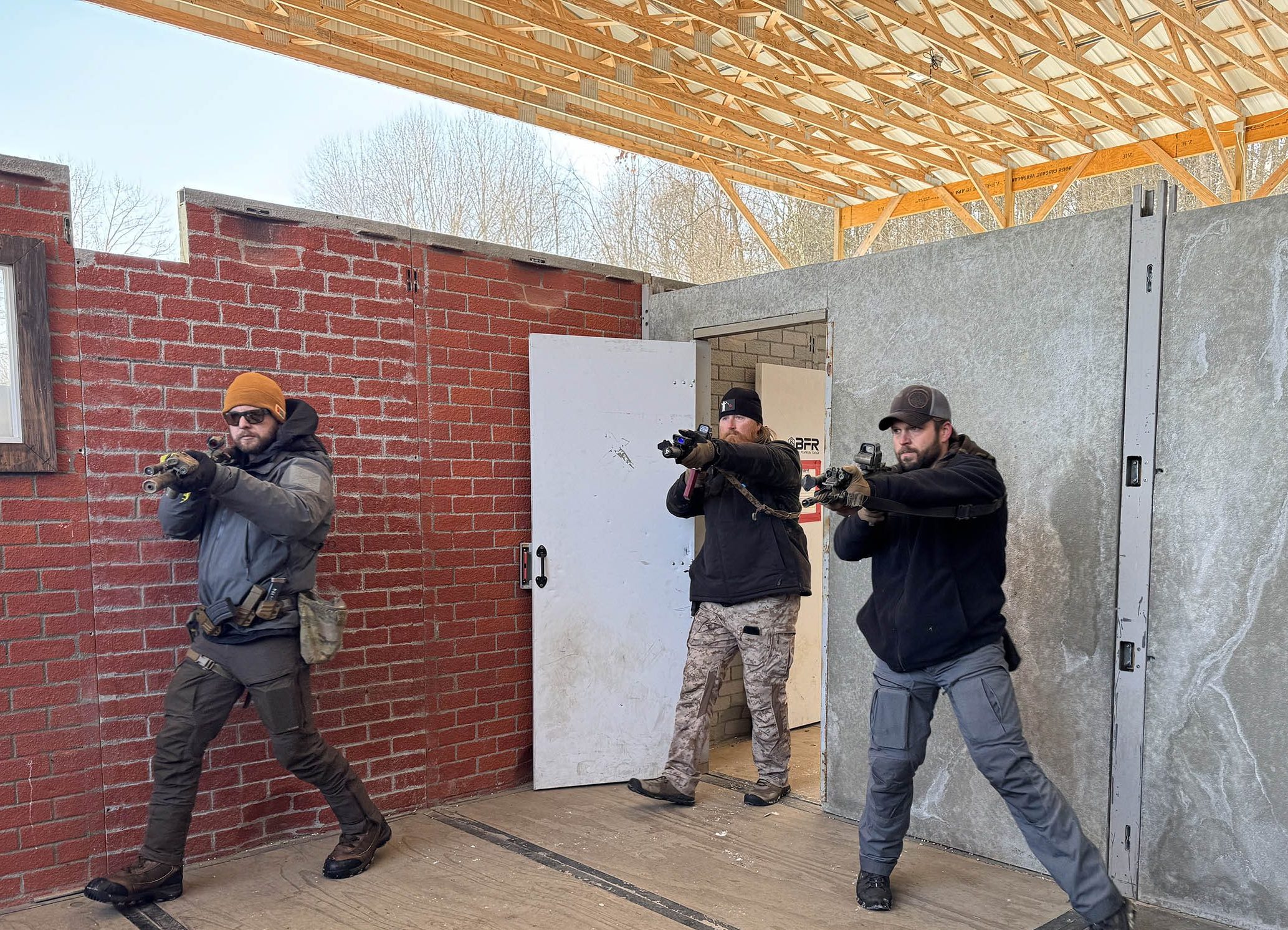
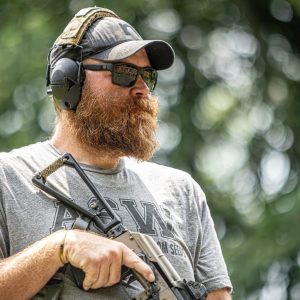
3 Responses
Thanks for the review and kind words, Mike! In future iterations of the abbreviated, 2-day program we will be removing the force-on-target and sticking to more basic reps of hallway problems for that final afternoon.
The class as a whole was a great group, and we look forward to the next block of classes at BFR.
Stay Dangerous